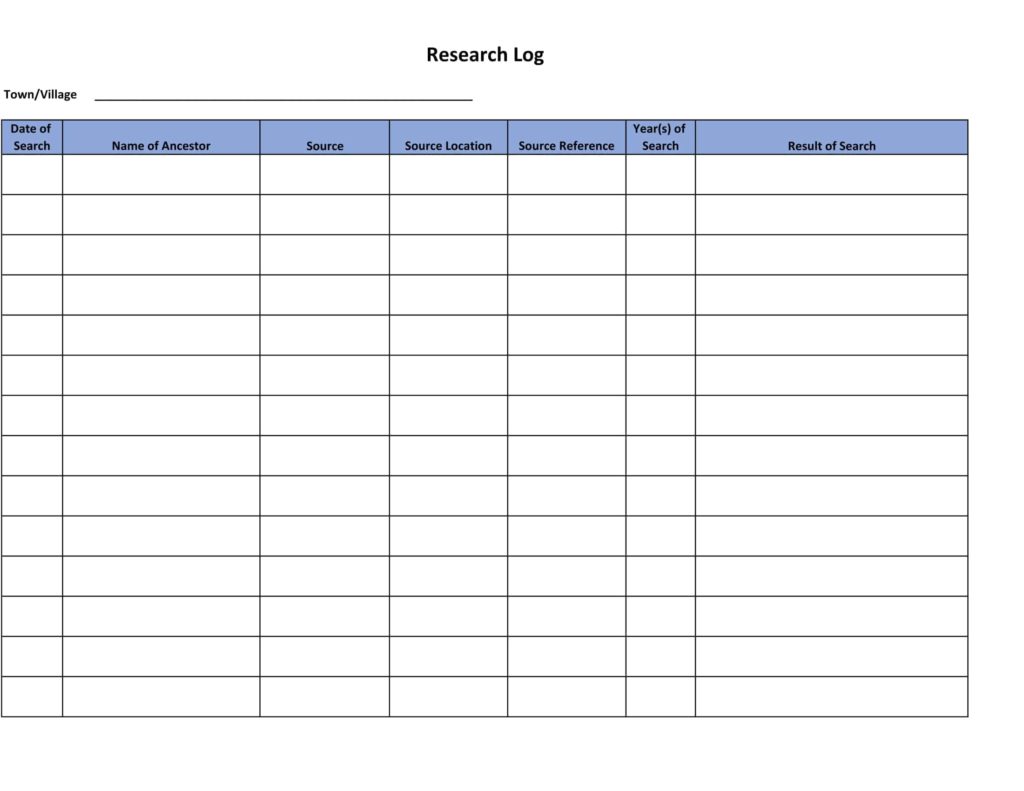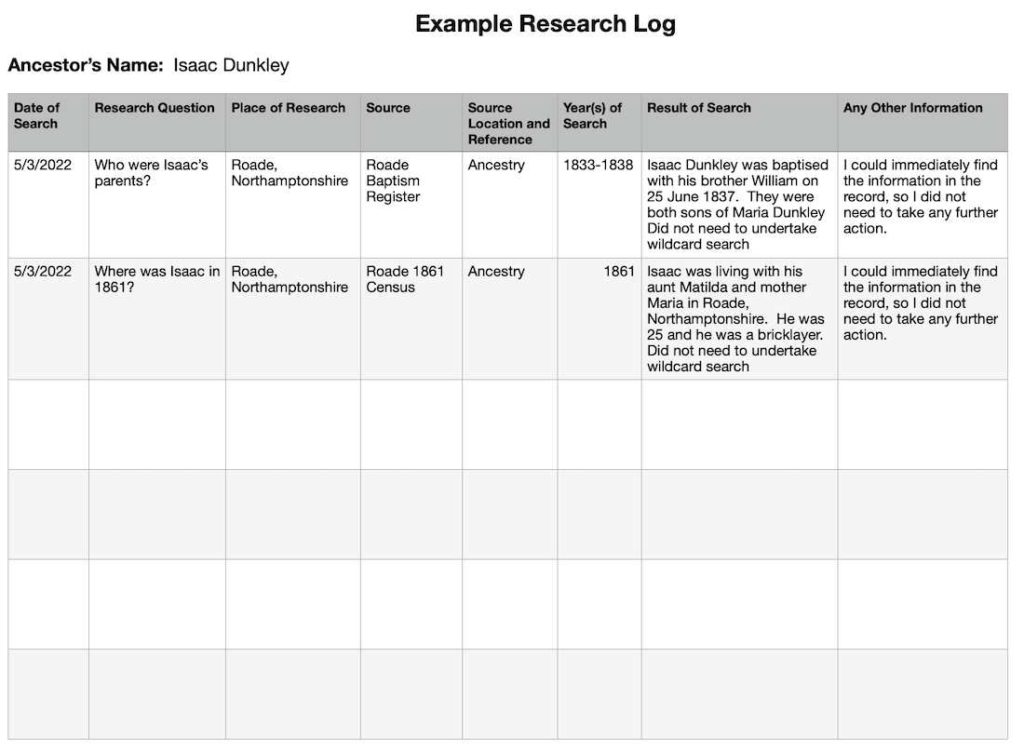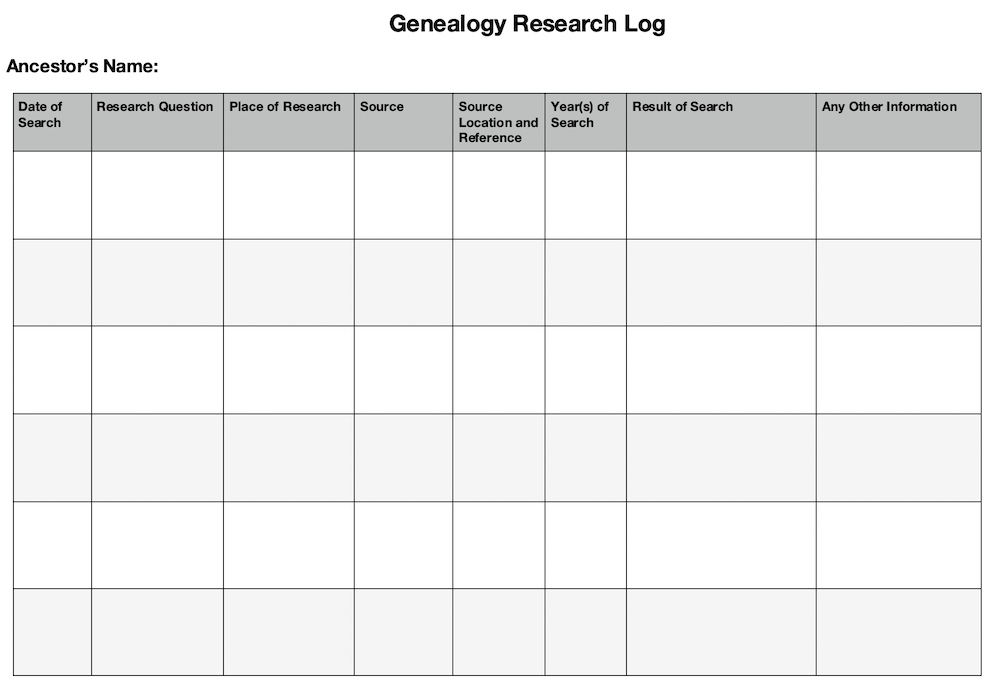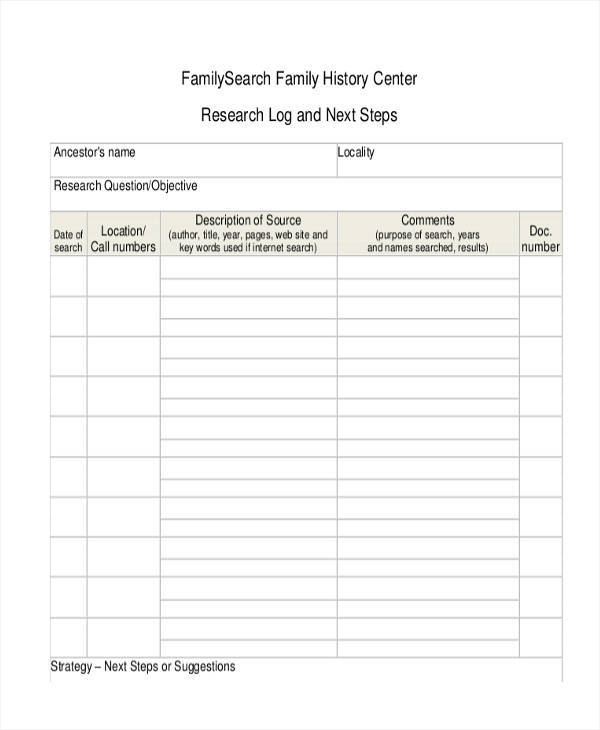Design your own research log if you wish. • keep copies in binders or file folders. • use in archives where only paper is allowed. Organize and document as you go. Web a family history research log is a document that tells you what you’ve researched, what you've found, what you didn’t find, and what research you still need to tackle.
You can easily add columns, rows, and sort your findings. Gather information about your family and ancestors by interviewing family members, friends. Individual worksheet, life timeline, family worksheet, australian electoral information form, research log, immigration sheet, marriage certificate, 3, 5, and 10 generation pedigree charts. Web if you’re new to the world of family history research, a research log is where you simply record what you’re looking for, where you looked, and what you found. Keep a separate log (or spreadsheet) for each family or ancestor you’re searching;
Download the family history forms and charts now! Here are some key reasons why a research log will help you: Here's how to find one and put it to use. Ancestor’s name objective(s) locality comments (purpose of search, results, years and names searched) description of source (author, title, year, pages) doc. Number location/ call number date of search.
Click on the title to view or print a pdf version of each. Click any family tree template to see a larger version and download it. Individual worksheet, life timeline, family worksheet, australian electoral information form, research log, immigration sheet, marriage certificate, 3, 5, and 10 generation pedigree charts. Web thank you for trying our research log template. 1 value of organizing your files. Before the computer age, genealogists kept these logs by hand. Reasons why you should use a genealogy research log. • print several copies to fill out by hand. Organize research requests sent to and from family members with this free genealogy form. It’s an information archive of everything you’ve done and need to do for a given ancestor or research goal. Web research logs are an important tool for organizing your family history research. Design your own research log if you wish. To help record the information you already know about family members, you may want to use standard genealogical forms such as family group records, and pedigree charts. Or, you can use database software to create a computerized log. Research logs will help you remember where you have researched make notes of where you want to go with your research.
It Is Essential To Keep Notes.
Click any family tree template to see a larger version and download it. 1 value of organizing your files. Web family research request correspondence log. Choose your preferred tool and template.
Reasons Why You Should Use A Genealogy Research Log.
You can use a standard printed research log form available from church distribution services (item 31825), or you can create your own form (see a sample log. Keep your research log up to date. Some people use a notebook or journal, and others do all their tracking in evernote, trello, or some other system. Keep all your biographical information for your ancestor in one place.
You Can Easily Add Columns, Rows, And Sort Your Findings.
Web how to organize your genealogy files with binders. Begin by carefully recording and organizing your information so important facts and clues will not be lost. Individual worksheet, life timeline, family worksheet, australian electoral information form, research log, immigration sheet, marriage certificate, 3, 5, and 10 generation pedigree charts. Your research objective (name the person and event) as soon as you have chosen them.
Web Family History Forms Help To Organize Family History Work.
This annotated research log (excel file) provides a starting point for you to track your research and stay focused on the genealogical issue at hand. Good research logs help you: Web research logs are an important tool for organizing your family history research. To help record the information you already know about family members, you may want to use standard genealogical forms such as family group records, and pedigree charts.









